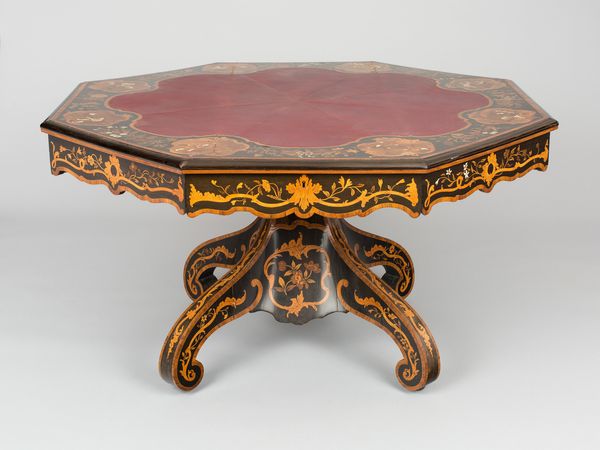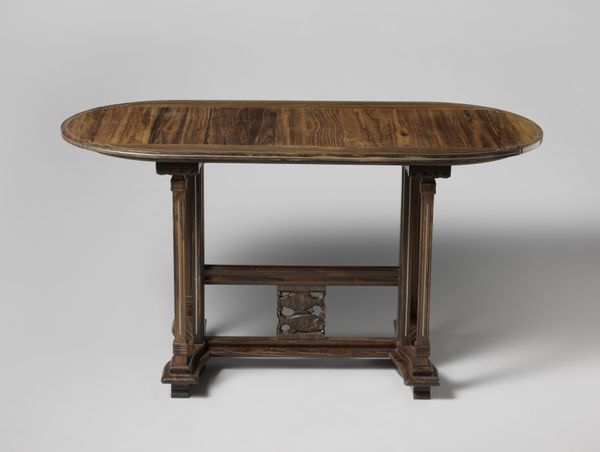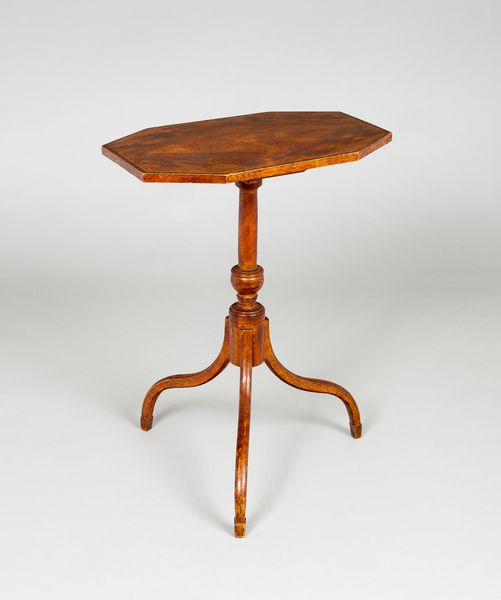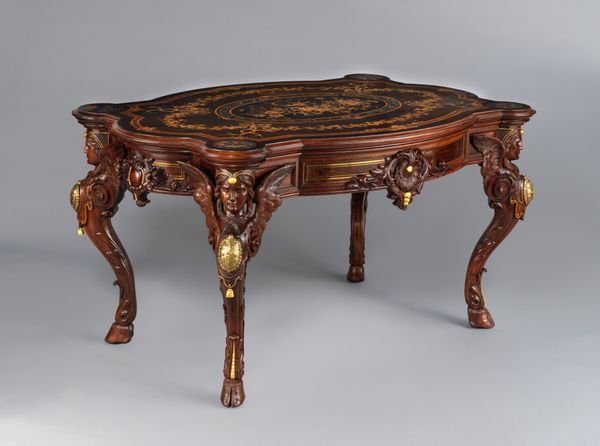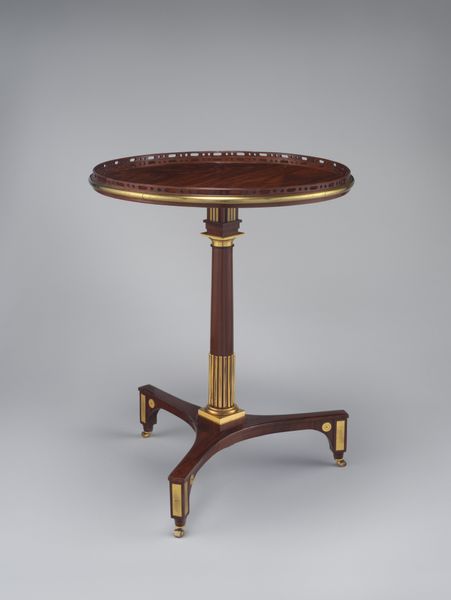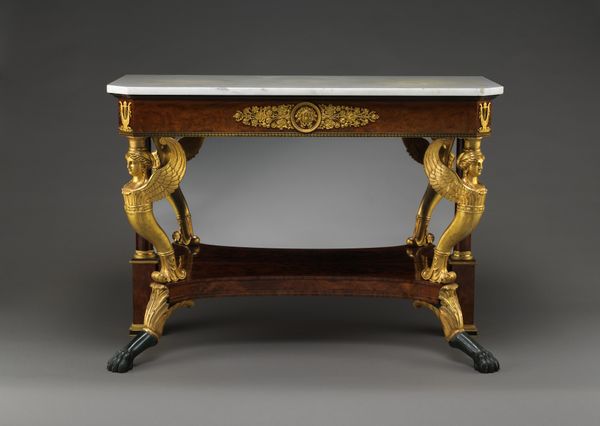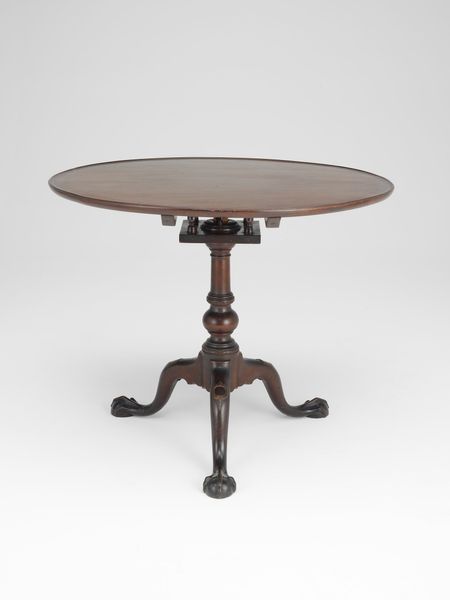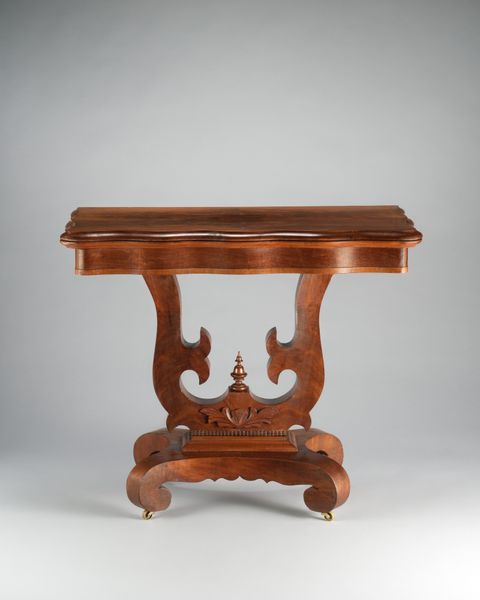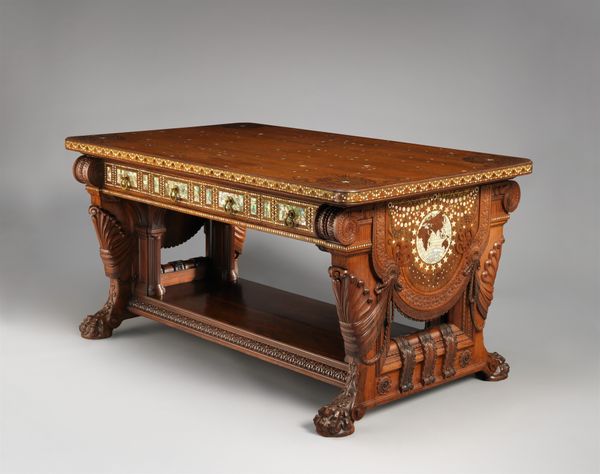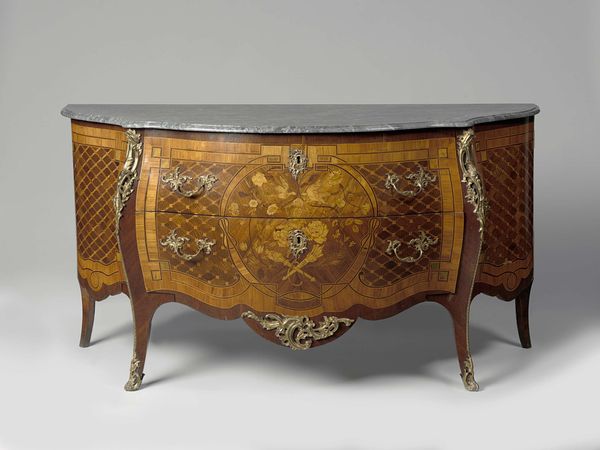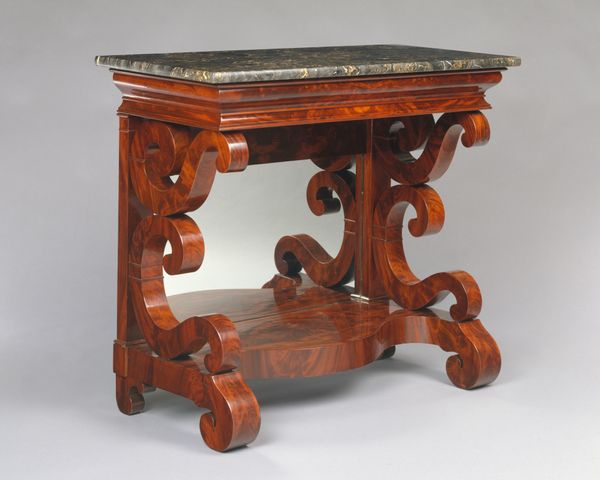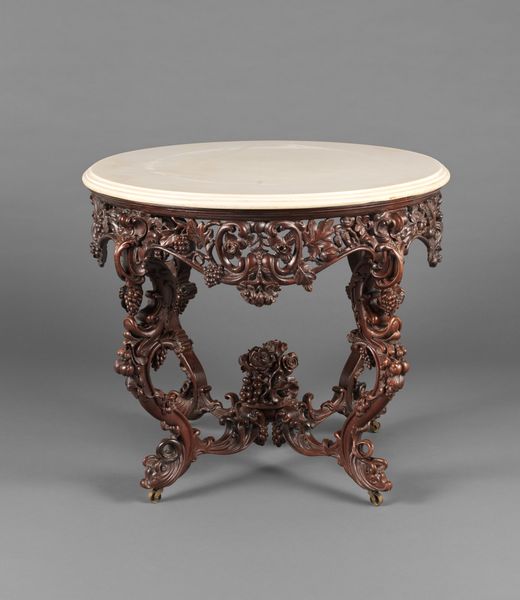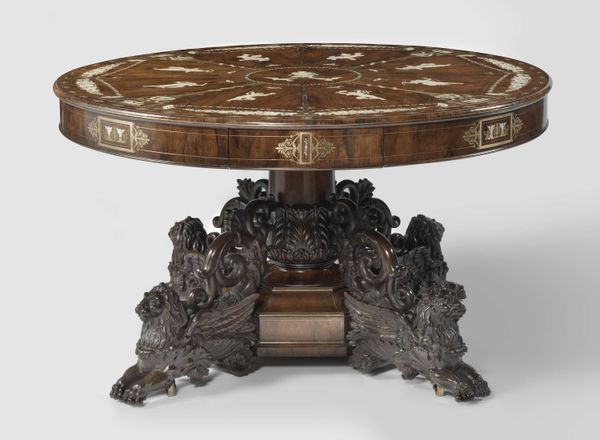
wood
#
table
#
neoclacissism
#
furniture
#
england
#
classicism
#
orientalism
#
wood
#
decorative-art
Dimensions: 72.4 × 106.7 × 105.4 cm (28 1/2 × 42 × 41 1/2 in.)
Copyright: Public Domain
Curator: It appears weighty, doesn’t it? A very deliberate use of symmetry, giving it a self-assured stance. Editor: Indeed. What we are viewing is a Pedestal Table, dating to around 1810, crafted in England and attributed to Thomas Hope. This remarkable piece currently resides here at The Art Institute of Chicago. It is made primarily of wood, expressing characteristics of Neoclassicism blended with hints of Orientalism. Curator: Orientalism? I suppose those stylized paw feet grounding the piece provide that flavor. Although, on closer inspection, they don’t detract from its overarching classical statement. Their weight creates a tension against the tabletop. Editor: You’re astute in recognizing the convergence of styles. Thomas Hope, the designer, was quite influential in promoting neoclassical taste in England. He had traveled extensively and brought back decorative ideas that he incorporated into his designs. He wanted to elevate British design to rival ancient Roman or Greek styles. Curator: So, the table functioned not merely as furniture but also as a statement? A kind of socio-political announcement. I see those gilt details, adding visual drama. They must have really popped in a candlelit room. Editor: Precisely. Pieces like this helped him communicate cultural power through design, influencing trends and demonstrating an understanding of how objects project an aura of class and sophistication. One should consider it was not just functional: furniture such as this was a tool used in shaping culture, taste, and status in English society. Curator: Well, that has certainly changed the way I now see the details of the piece—from paw feet to those concentric circles embedded in the table surface. I was just focused on line, texture and volume. Editor: It's important to appreciate how design actively shapes cultural conversations.
Comments
No comments
Be the first to comment and join the conversation on the ultimate creative platform.
